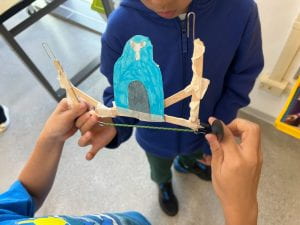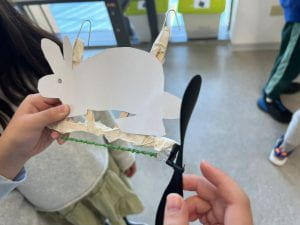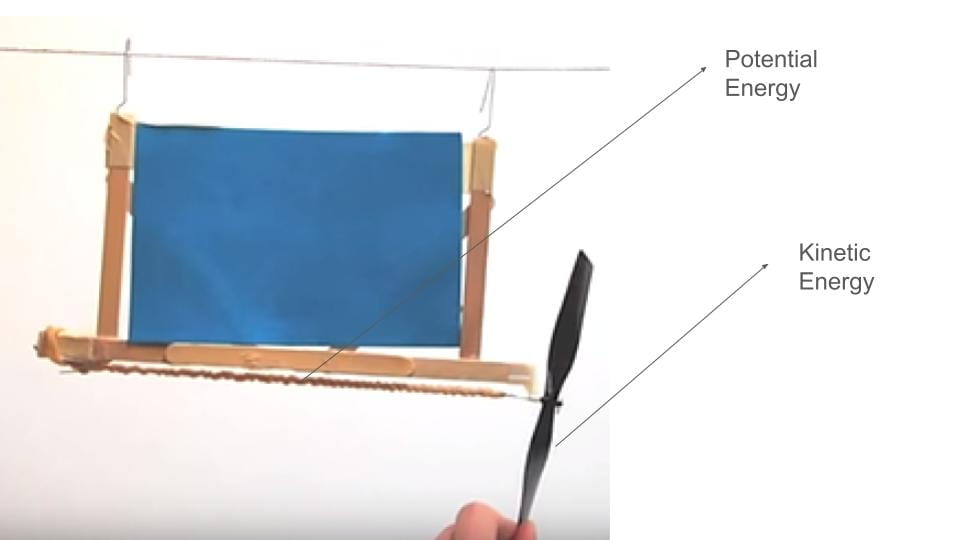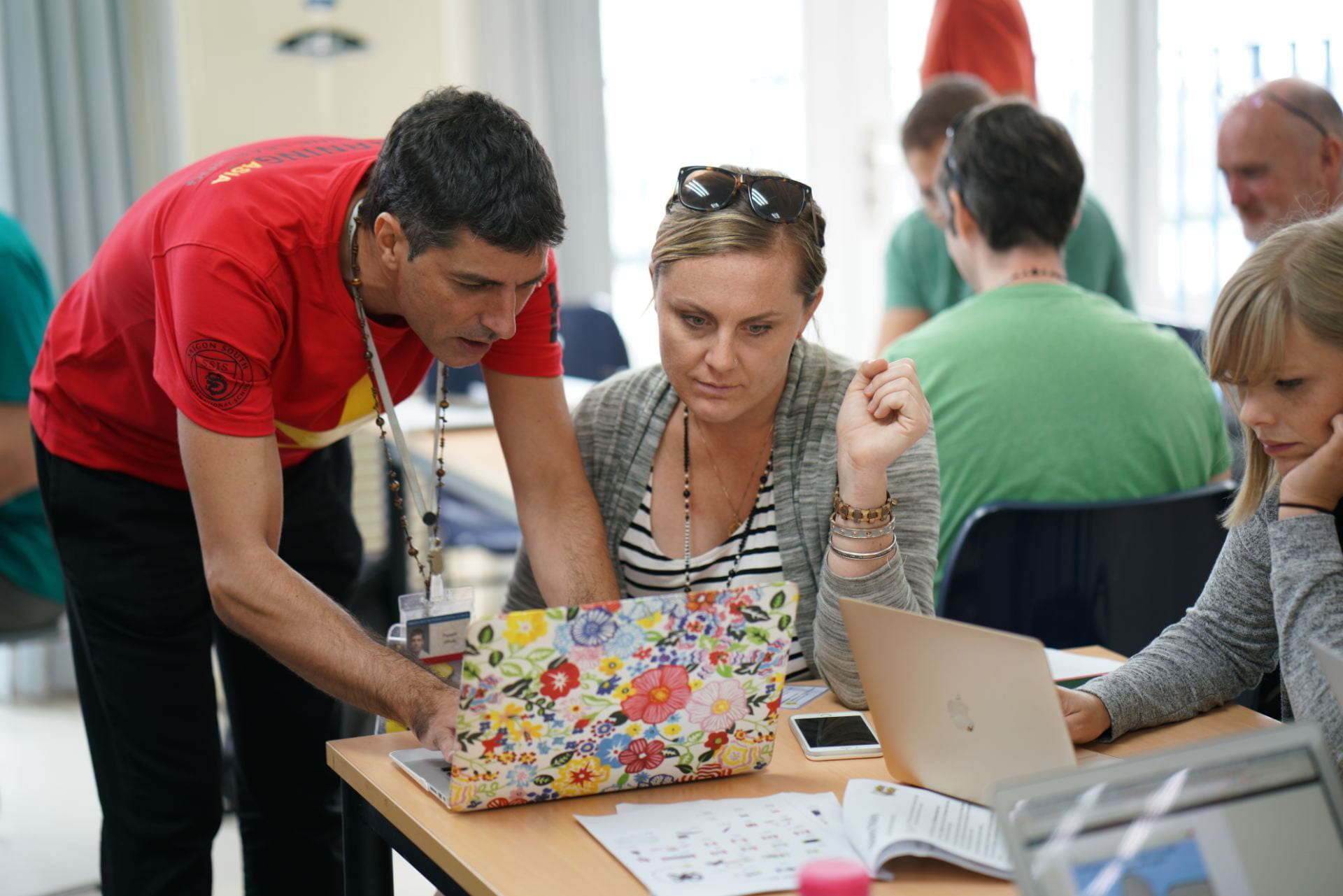In our grade 3 science unit on motion, students recently embarked on an exciting activity: designing and building propeller-powered zipline racers. This hands-on project not only fostered creativity but also deepened their understanding of key concepts such as thrust, torque, and energy transfer.
Project Goal: create a propeller-powered vehicle capable of rapidly accelerating along a zip line. With this challenge in mind, students set out to design and construct their zipline racers, utilizing various materials and design variables.


Design Variables: Students explored the impact of different design elements on the performance of their racers. They experimented with the number of rubber bands, which served as the source of energy for propelling the vehicle, and the shape of the paper cutout, which played a crucial role in preventing the racer from flipping over during its journey.
Understanding Key Concepts: Central to the success of their zipline racers was grasping key concepts related to motion. Through guided instruction and hands-on exploration, students delved into the principles of thrust and torque:
- Potential Energy: Energy stored in an object’s position or configuration, waiting to be converted into motion. In the zipline racer, potential energy is stored in stretched rubber bands, ready to power the propeller and move the racer along the zip line.
- Kinetic Energy: Energy possessed by an object in motion, determined by its mass and speed. As the potential energy in the rubber bands is released, it transforms into kinetic energy, propelling the racer forward along the zip line.

Through this engaging STEAM activity, grade 3 students not only applied their knowledge of motion but also honed their critical thinking, problem-solving, and teamwork skills. As they tested and iterated their zipline racers, they discovered firsthand the fascinating interplay between science, engineering, and creative design.
Checkout this video to construct these ziplines.
You’ll need:
- Craft sticks/popsicle sticks: Regular ones, available at craft stores or online.
- Rubber bands: Look for #117B bands, available at office supply stores, which are cheaper and work well.
- Hot glue and glue guns: Ensure you have an ample supply, especially for class projects.
- Large paper clips: Vinyl-coated ones have the least friction on the zipline.
- 5″ or 6″ hook-nosed propellers: I got those from Amazon.
- Fishing line or kite string: Fishing line works best due to minimal friction.
- Paper or craft foam.
- Masking tape.
